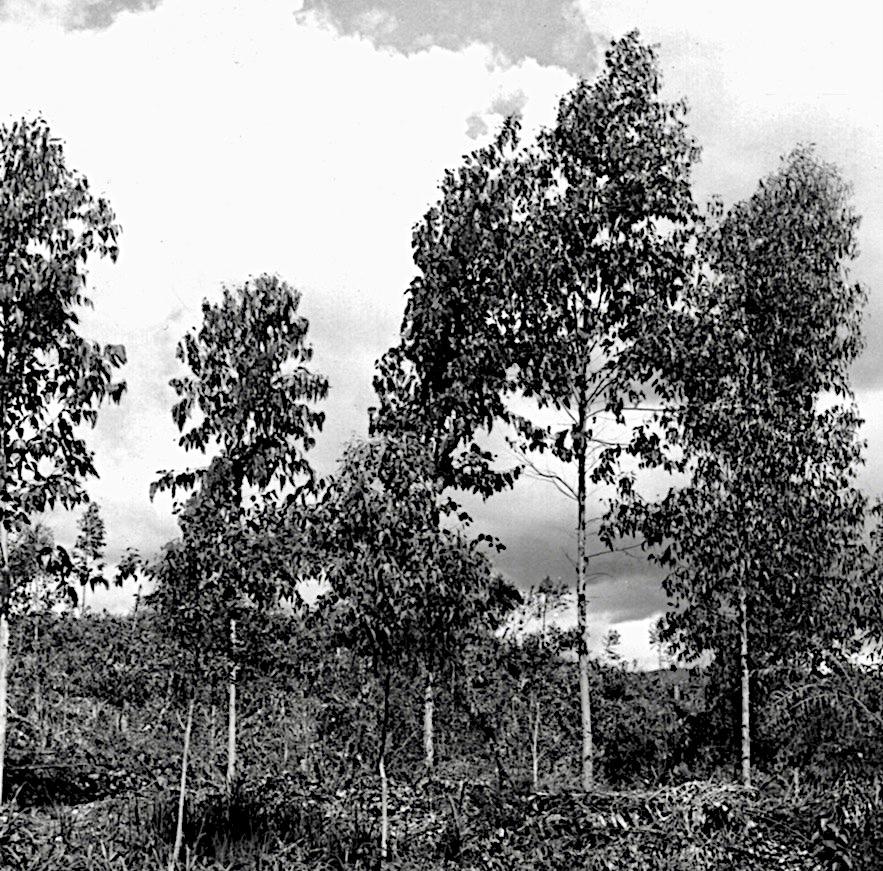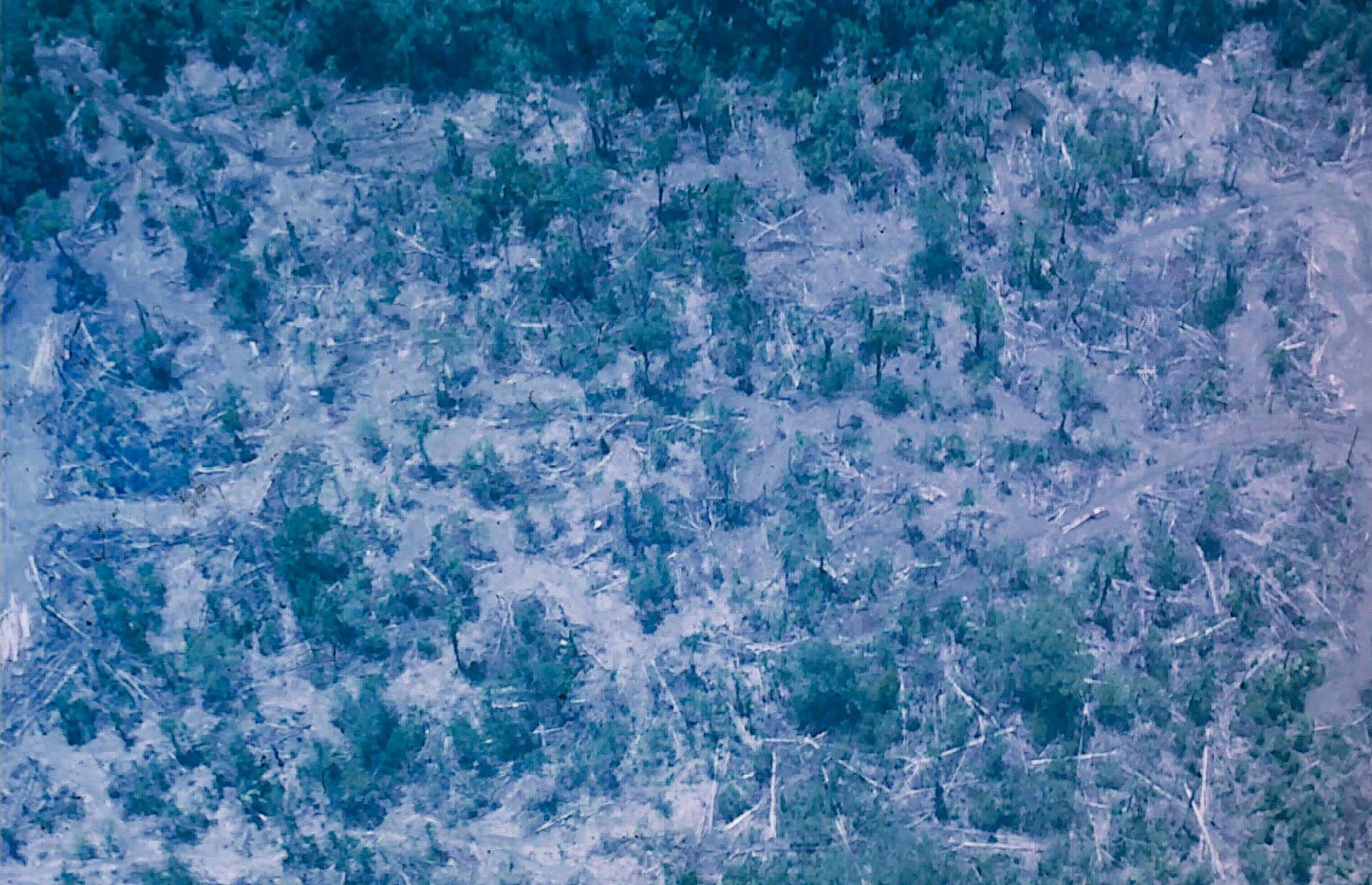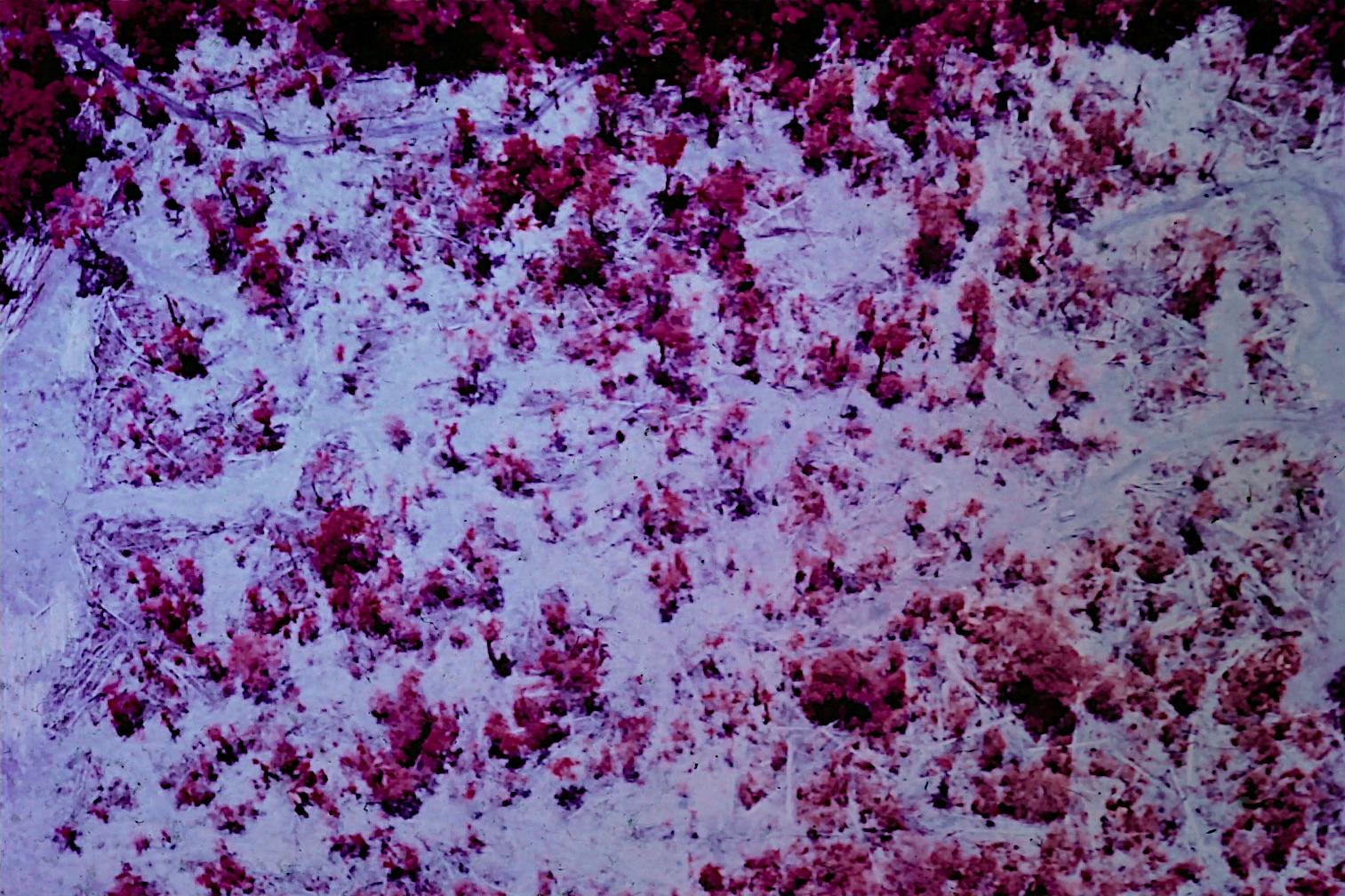
1 minute read
Simulated pulpwood logging at Baku
from PNGAF MAG ISSUE # 9B - 5B4D3 Dr John Davidson Accompaniment "RAINBOW EUCALYPT MAN" Part 3 of 8 parts
by rbmccarthy
Jeff Fairlamb and John Dalton established and measured these temporary plots on 5 and 6 December 1972. Results were:
EUCALYPTUS “DECAISNEANA” PROVENANCES, RANDOM PLOTS AT ONE YEAR
Advertisement
Provenance Mean Height (cm) Survival (%)
338 237 83
336 169 75
337 174 66
339 120 31
Left: E. “decaisneana” provenance trial Bulolo at age about one year. Large trees at rear: Provenance 338; small trees at the front: Provenance 339.
Both sets of results indicated provenance 338 (Portuguese Timor, low altitude) was the best and provenance 339 (Indonesian Timor, high altitude) was the worst, at least at this site. Provenance 338 was the one that early on had a high number of apparently inbred (selfed?) seedlings, so most of these must have died or been culled before reaching the field, leaving the vigorous outcrossed ones to perform well.
Simulated pulpwood logging at Baku
A 20-acre (about 8 ha) area of typical lowland rainforest at Baku was subjected to a simulated pulpwood logging in 1972 (photographs next page).
Noticeable features of this site were the large amount of logging slash left on the ground, many potential pulpwood stems left behind in the coupe and a considerable number of living trees and understorey vegetation remaining on the site. What was also noticeable, but the significance of which was overlooked at the time, was a marked rise in the water table after felling most of the trees. This alone was later determined to probably result in a drop of at least two site quality ranks with regard to reforestation with E. deglupta, even before considering adequacy of site preparation before planting.


Matching near vertical aerial photographs of simulated pulpwood logging at Baku in 1972. Top: Natural colour (Kodak Kodachrome 35 mm), Bottom: colour infrared (Kodak Aerochrome III 1443 35mm). The top photograph reveals a considerable number of small logs and slash left on the ground, the bottom photograph shows in red live vegetation remaining, and the damp ground in grey, especially on the snig tracks at the top.









